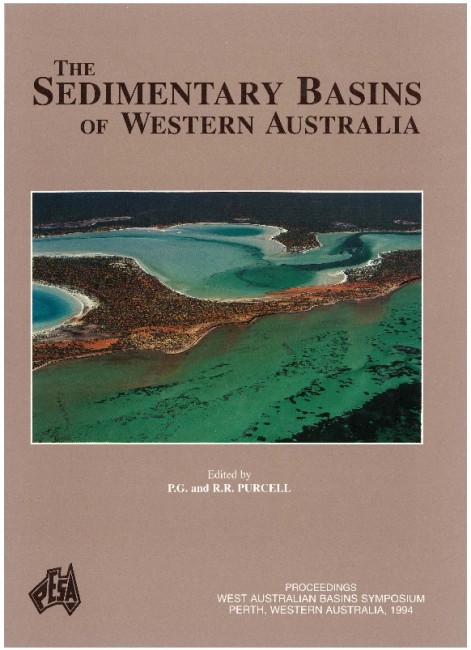Publication Name: The Sedimentary Basins of WA
Authors: R.W.T. Wilkins, N.J. Russell and M.V. Ellacott
Publication Volume: 1
Date Published: July 1994
Number of Pages: 29
Reference Type: Book Section
Abstract:
Fluorescence alteration of multiple macerals (FAMM) is a powerful new CSIRO technique based on fluorescence alteration properties of macerals. FAMM provides equivalent vitrinite reflectance (EVR) data that are internally corrected for reflectance suppression effects. Measured vitrinite reflectance (MVR) and EVR data for five Carnarvon Basins wells are assessed by palaeoburial and palaeothermal modelling, using basin modelling software, to demonstrate the advantages of the FAMM technique.There is a marked offset in MVR data profiles at, or near, the major unconformity between Upper Triassic and younger rocks in western Barrow Sub-basin wells Bowers-1, Chinook-1 and Gorgon-1. It is not possible to model these data with constant palaeo heat fluxes and plausible amounts of erosion at this unconformity. Although it is possible to model MVR data with a high Triassic heat flux, coupled with a low post-Triassic heat flux, the latter is significantly lower than current heat fluxes modelled from well temperatures. EVR data profiles do not exhibit any offset at this unconformity and, as such, they are readily modelled with a constant palaeoheat flux. For the Beagle Sub-basin wells, the discrepancy between the MVR and EVR data for Depuch-1 is not significant, but an anomalous MVR zone in Picard-I creates modelling uncertainties.
The best strategy for wells penetrating the Triassic is to model the whole well using Triassic MVR data as reference points for a vitrinite depth/reflectance profile. However, if there is any indication of marine influence
in the uppermost Triassic, these data may also be suspect. For wells terminating in the Cretaceous or Jurassic, there are no reference points, and EVR data should be used to overcome any problems associated with reflectance suppression or maceral identification.


